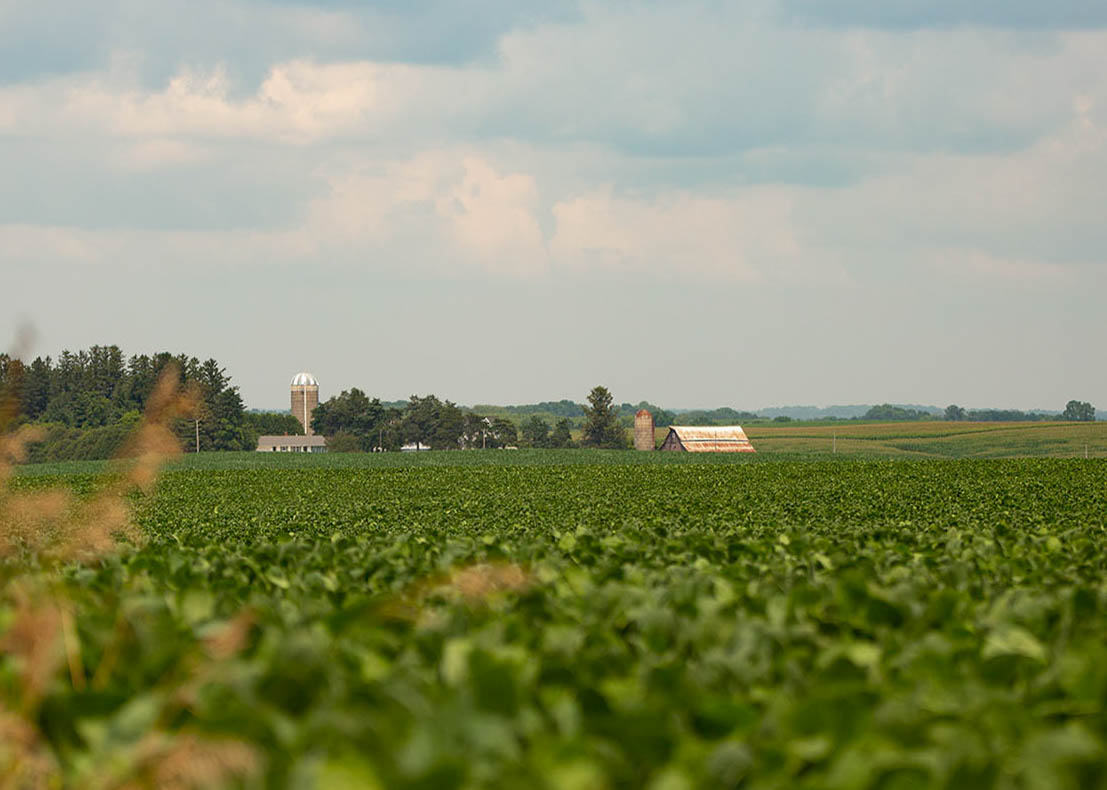
(Photo: Joclyn Bushman/Iowa Soybean Association)
Iowa farmland values skyrocket 29% in 2021
January 18, 2022 | Bethany Baratta
Strong crop yields, higher crop and livestock prices, favorable interest rates, robust federal payments and limited land supply supported a lift in Iowa land values by 29% over 2020 values.
Results from Iowa State University’s Land Value Survey, issued recently by ISU’s Center for Agricultural and Rural Development, show the average value of an acre of Iowa farmland rose 29% over the past year to $9,751 per acre as of Nov. 1, 2021. All nine crop reporting districts in the state showed an increase in farmland values.
The nominal value of an acre of farmland is now higher than at any point since Iowa State University began surveying values in 1941, says Wendong Zhang, Iowa State University assistant professor of economics and ISU Extension economist. Values are 12% higher than the previous peak in 2013; although the current value in inflation-adjusted terms are still lower than 2012 and 2013.
“This year has been remarkable in the sense that after land values have been stagnant for a few years, we see a dramatic increase over the past 12 months,” Zhang says.
The 2021 survey results are based on 645 county-level value estimates provided by 455 agricultural professionals, mostly ag lenders and broker/realtors. Started in 1941, the survey is the only one that provides estimates for all of Iowa’s 99 counties. The survey has been conducted by the Center for Agricultural and Rural Development in the Department of Economics at Iowa State University and Iowa State University Extension and Outreach since 2014.
Cautiously optimistic
Despite the positive factors leading to the increase in Iowa land values, Zhang says respondents had some reservations.
“They’re increasingly concerned about higher input costs, the sustainability of high land prices, possible changes in interest rates and political uncertainty regarding policies, such as possible tax law changes, which were all cited as negative factors influencing the land market,” Zhang says.
Survey respondents are very optimistic about the strength of the future land market. Eighty percent of those surveyed predicted a continued increase in land values.
The groups used the following formula to determine the change in value of each county: land value=localized net income ÷ universal interest rate.
The largest percentage increases were in the North Central and West Central Districts, at 34.5% and 33.1%, respectively.
The Southwest and Southeast Districts, which saw the smallest percentage changes, reported an increase of more than 20%.
High quality land across all districts saw stronger land value increases compared to mediumand low-quality land, Zhang says, noting competitive bidding in highquality land due to low availability.
The highest value was estimated for Scott County at $13,852 per acre. This was driven by its location in relation to the Quad Cities and proximity to Mississippi River and associated markets, Zhang says.
The lowest value was in Decatur County, at $5,062 per acre.
Back